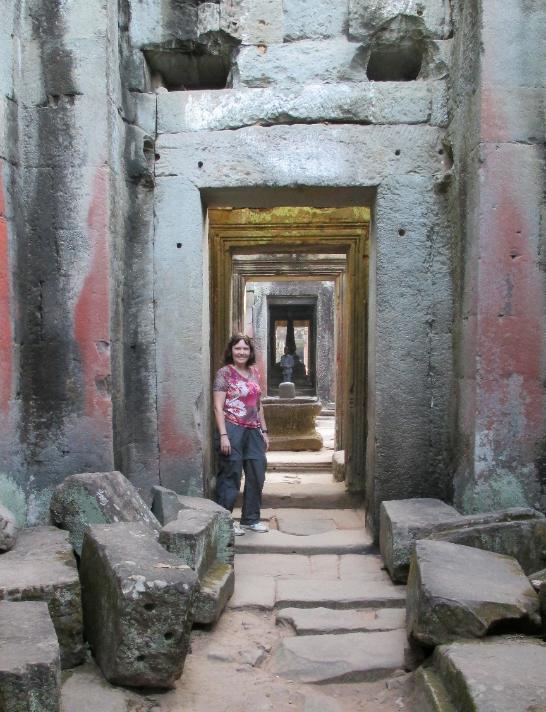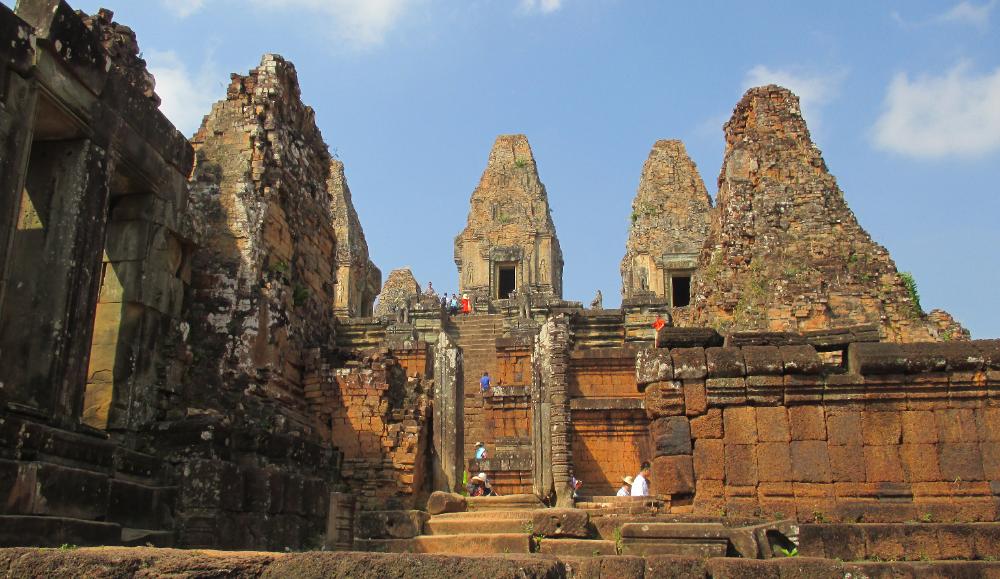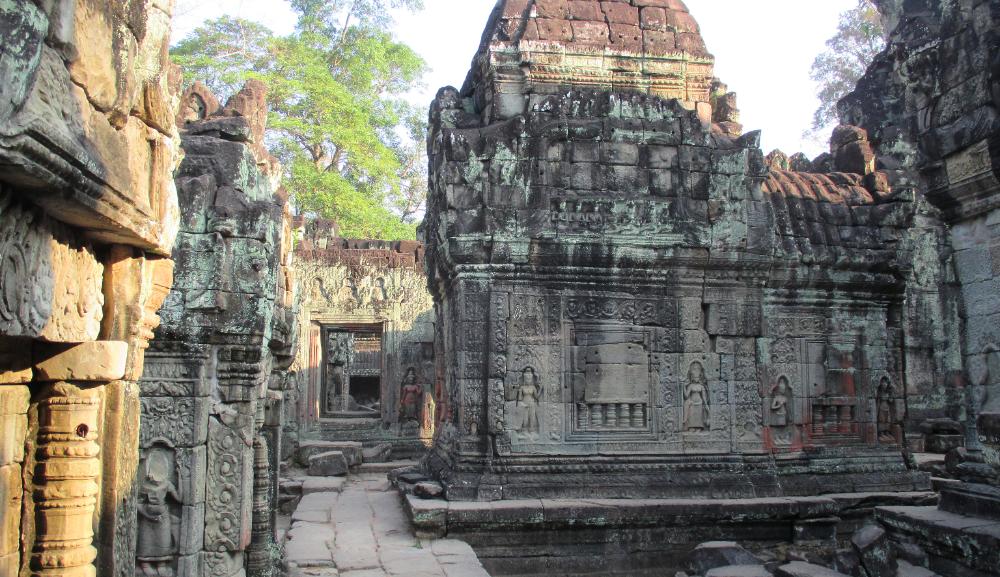Where We Be
Preah Kahn with its park-like setting and multiple temples was one of our favorite sights
|
Angkor -- Other Central Temples
|
This two-story pavilion is in surprisingly good shape after more than 800 years
|
So we've covered the three biggies -- Angkor
Wat, Angkor Thom, and Ta Prohm. These are the
central sights that are on almost everyone's
must-see list. But there are a lot more temples
and monuments to see at Angkor -- after all, this
is the largest religious temple complex in the
world. The best way to see them all is by tuk-tuk.
For about $15 a day your tuk-tuk driver will take
you from one sight to the next and wait as long
as you like while you check each one out.
There are two major tour routes for seeing the
central temples at Angkor -- one called the
Small Circuit and the other the Grand Circuit. If
you take these two routes, you'll have seen the
best-of-the-best central temples. We would
emphasize a 3-day pass ($40 pp) is the minimum
you should get if you want to see Angkor well;
or opt for a 7-day pass as we did ($60 pp). Either
pass can be used on nonconsecutive days.
Preah Kahn ("Sacred Sword") was built by mega-builder Jayavarman VII in 1191 AD
|
Our tuk-tuk driver dropped us off at one end of Preah Kahn and picked us up at the other.
We walked leisurely one-way through the park-like complex, enjoying a variety of sights.
|
Preah Kahn is a fusion temple dedicated to Buddha plus three Hindu gods. The Buddha gates are equal-sized,
whereas the others have successively smaller doors, emphasizing the unequal nature of Hinduism. At the meeting
point of the various gates is the sanctum sanctorum (above center), now containing a simple stone monument.
|
Many parts of it are in a ruined state but that doesn’t take away from its architectural grandeur
|
Ta Keo was under construction when we visited so we only saw it briefly
|
Sra Srang is the “Royal Bath,” a large lake once used for ritual ablutions
|
Chau Say Tevoda is another small temple worth a quick look
|
Across the street from Chau Say Tevoda is Thommanon set amongst the trees
|
Banteay Kdei is a significant temple complex that took us awhile to walk through
|
This temple is particularly memorable for its carvings of dancing apsaras
(female divinities) and warriors with swords in the interior court
|
We'll cover all the remaining temples with just one picture each. Ta Som felt like a smaller version
of Preah Kahn with its four sets of gates meeting in the middle; it was also built by Jayavarman VII.
|
Another personal favorite was East Mebon, a tall temple with lots of stairs and beehive towers at the top
|
We affectionately call East Mebon the Elephant Temple because of the carved elephants at the corners of each platform
|
Pre Rup and East Mebon are located next to one another;
you may want to climb up one and just stare up at the other!
|
Pre Rup is another tall temple, with possibly even steeper stairs than East Mebon
|
We liked Neak Poan because it felt different from everything else at
Angkor, with its circular temple set at the center of a square reservoir
|
View of the Cambodian jungle near sunset
|
People come less for the temple itself than they do for the hilltop views of Angkor Wat in one direction and the setting sun
in the other. Be forewarned, though: Angkor Wat is quite distant and small from here (the above pic is on maximum zoom).
|
Crowds watch the sun set from atop Phnom Bakheng. Prepare for a long wait if you want to
get to the top near sunset -- or pick a different temple for a similar view without all the people.
|
The carvings at East Mebon are quite intricate
|
Prasat Kravan is a shrine with five towers, the tallest
of which is in the middle. It's worth a quick walk-around.
|




























